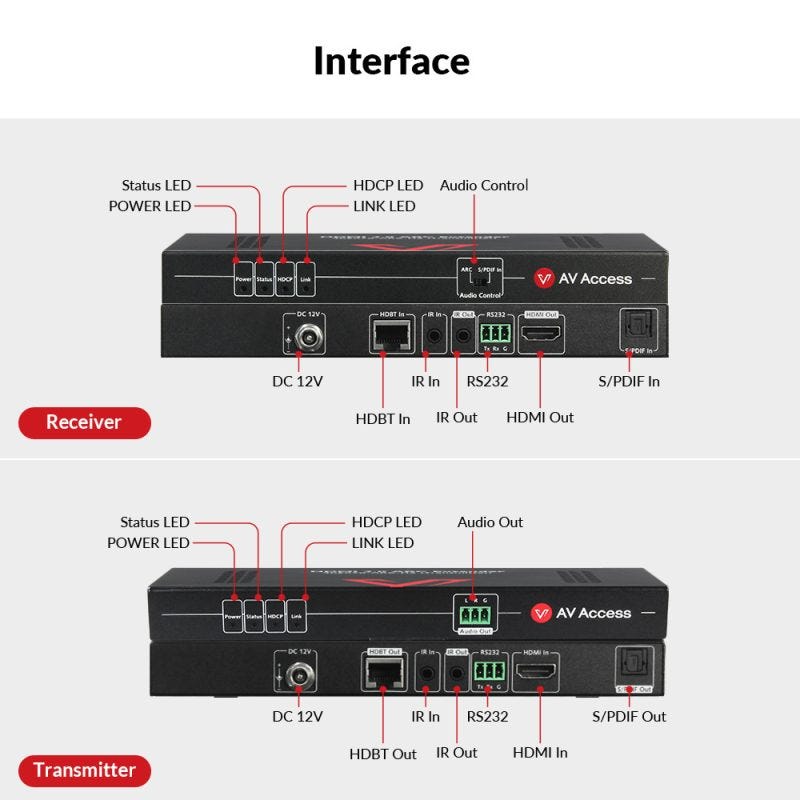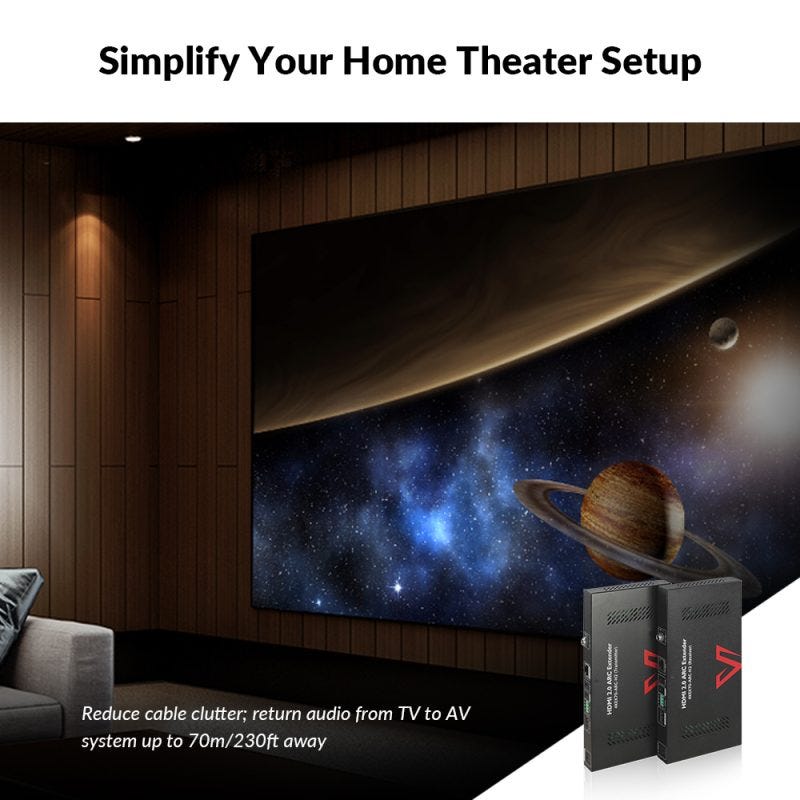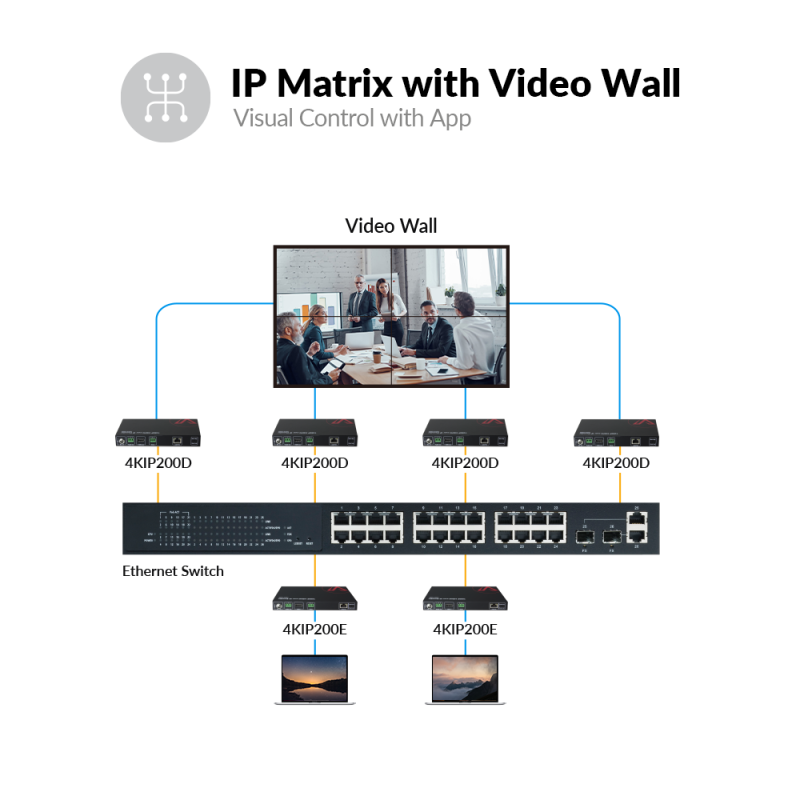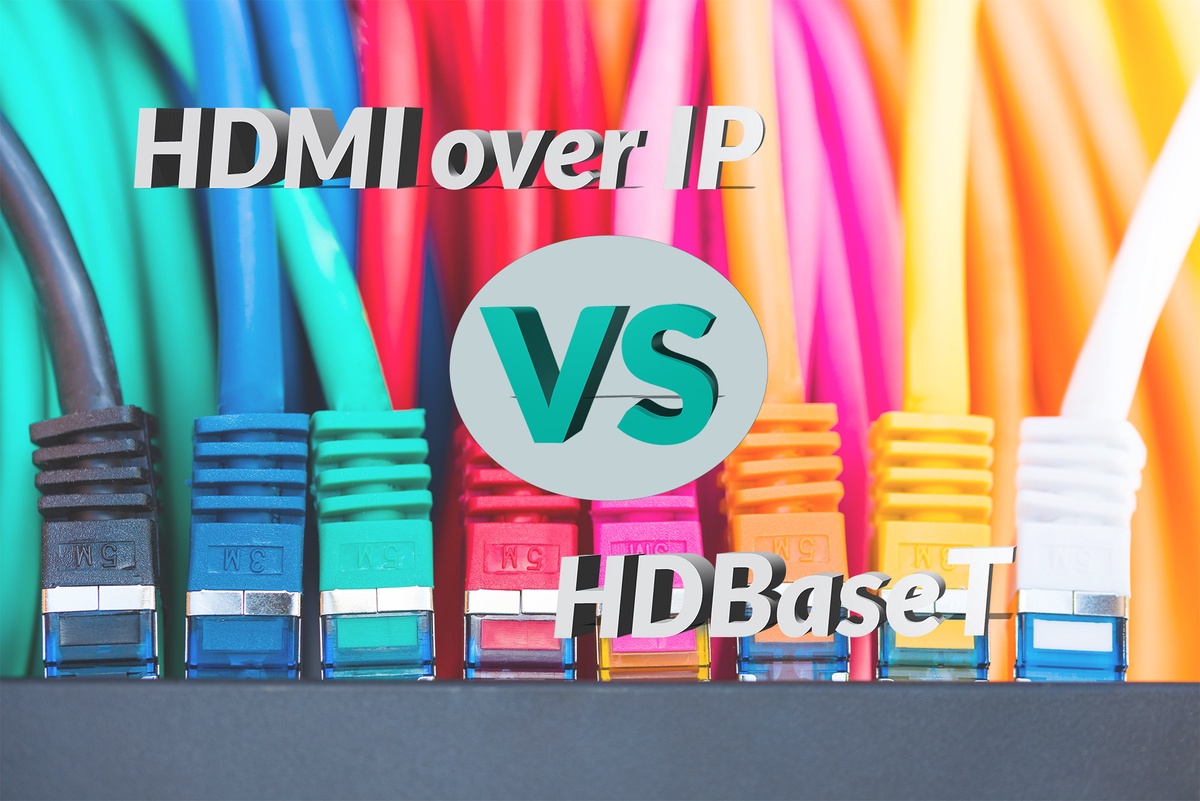Nowadays, businesses prioritize building streamlined networks with minimal cables to avoid confusion and potential accidents caused by cable clutter. Fortunately, several technologies have emerged to address this concern. HDMI over IP and HDBaseT have gained widespread popularity and acceptance due to their advantageous features.
Both methods enable the distribution of high-definition video signals from a single source to multiple screens, utilizing the existing Ethernet infrastructure. This is achieved through the use of various devices such as switches, adapters, and splitters.
However, HDMI over IP and HDBaseT employ distinct approaches to accomplish this task. The choice between HDMI over IP and HDBaseT depends primarily on your specific application requirements. In this article, we will delve into the details of HDMI over IP and HDBaseT, providing a comprehensive discussion of their features and functionalities.
What Is HDMI over IP?
HDMI over IP (also known as HDMI over Ethernet ) is a technology that allows you to distribute HDMI signals over a local area network (LAN). It utilizes existing IP infrastructure to transmit audio and video signals from a source device to multiple display devices, enabling flexible and scalable AV distribution. This technology is commonly used in applications such as digital signage, video walls, and multi-room AV systems.
What Is HDBaseT?
HDBaseT is a connectivity standard that enables the transmission of high-definition audio and video, Ethernet, power, and control signals over a single CAT cable. It provides a convenient solution for extending HDMI signals over long distances without signal degradation. HDBaseT is widely used in various applications, including home theaters, conference rooms, and professional AV installations.
HDMI over IP vs HDBaseT: What Is the Difference?
When comparing HDMI Over IP and HDBaseT, several important factors stand out: transmission distance, ease of setup and device connectivity, supported resolutions and refresh rates, expandability and configuration flexibility, and cost analysis. Understanding these differences will help you choose the technology that best fits your needs. Let’s explore each aspect in detail.
Transmission Distance
With the help of a network switch, HDMI over IP can transmit signals over long distances, reaching beyond 100 meters with the use of additional network switches and CAT cables.
HDBaseT can extend signals up to 100 meters over a single CAT cable, making it suitable for medium to long-distance installations.
Ease of Setup and Device Connectivity
Setting up HDMI over IP requires a network infrastructure, including network switches and routers. It may require more initial configuration but offers flexibility in device connectivity.
HDBaseT provides a plug-and-play solution with a simple connection between devices using standard CAT cables. It is easy to set up and does not require additional network equipment.
Supported Resolutions and Refresh Rates
HDMI over IP supports various resolutions and refresh rates, including Full HD (1080p), 4K Ultra HD, and even 8K resolutions, depending on the capabilities of the devices and network bandwidth.
HDBaseT supports Full HD (1080p) and 4K Ultra HD resolutions, providing high-quality video transmission for most standard applications.
Expandability and Configuration Flexibility
HDMI over IP offers excellent scalability, allowing easy addition of new devices to the network and flexible configuration changes without the need for rewiring.
HDBaseT offers limited scalability as each device requires a dedicated point-to-point connection. Adding new devices may require additional cabling and configuration adjustments.
Cost
The cost of HDMI over IP solutions can vary depending on the complexity of the network infrastructure and the number of devices. However, it provides a cost-effective solution for large-scale installations.
HDBaseT offers a more straightforward and cost-effective solution as it requires fewer components and infrastructure.
HDMI over IP vs HDBaseT: Which to Choose?
After understanding the differences between HDMI over IP and HDBaseT, it’s essential to explore their respective applications. By understanding where these technologies excel, you can determine which one is the best fit for your needs.
Applications of HDMI over IP
HDMI over IP is an excellent choice for applications that require flexible device connectivity, scalability, and extensive signal distribution. It is commonly used in various scenarios such as digital signage, video walls, multi-room AV systems, and large-scale installations.
With HDMI over IP, you can easily connect and distribute high-quality audio and video signals to multiple displays over an existing Ethernet network. Its flexibility and scalability make it suitable for complex setups and environments that demand efficient signal management.
Applications of HDBaseT
HDBaseT technology is well-suited for applications where simplicity, ease of installation, and cost-effectiveness are essential factors. It finds common use in home theaters, conference rooms, classrooms, and small to medium-sized AV installations.
HDBaseT allows for the transmission of uncompressed high-definition video, audio, and control signals over a single Cat5e or above Ethernet cable. It simplifies the setup process by eliminating the need for multiple cables and connectors, making it a convenient solution for less complex AV setups.
When considering HDMI over IP and HDBaseT options, AV Access offers a reliable and feature-rich solution with the 4KEX70-ARC-H2. This product is a powerful HDMI over IP extender that supports 4K UHD resolution and audio return channel (ARC) functionality. It is designed for home theater applications and is upgraded with better device compatibility.


With the latest HDBaseT technology, this ARC HDMI extender can transmit 4K@60hz 4:4:4 ultra HD HDMI signal up to 40m/130ft over a single Cat6a/7 cable. With HDCP 2.2 compliant and 18Gbps bandwidth, it can support HDR10. Besides, it supports multichannel audio formats, including Dolby TrueHD, Dolby Atmos, DTS-HD Master Audio, DTS:X, etc.
Features like IR pass-through and RS232 control offer convenient control options for your AV system. It is an ideal solution for applications requiring long-distance signal transmission and flexible device connectivity.
If you consider building a distributed 4K IP matrix with a video wall for the sports bar, house of worship, or retail, 4KIP200 HDMI over IP Solution is ideal for you.


The 4KIP200 is a comprehensive HDMI over IP solution designed to simplify video distribution and management. It allows you to distribute 4K UHD video and audio signals over an IP network, making it suitable for large-scale AV installations.
The system offers features such as video wall support, multicast capabilities, and seamless switching between sources. With its user-friendly interface and advanced control options, it provides a seamless and efficient solution for applications that require extensive signal distribution and management.
Summary
When deciding between HDMI over IP and HDBaseT, it is essential to consider the specific requirements of your AV installation. HDMI over IP offers flexibility, scalability, and support for various resolutions, making it ideal for large-scale and complex setups.
On the other hand, HDBaseT provides a simple plug-and-play solution with cost-effectiveness and ease of installation for smaller installations. By evaluating factors such as signal transmission distance, device setup, resolution support, scalability, and cost, you can make an informed choice that aligns with your needs.
You May Be Also Interested
Application of AV over IP Solutions in Video Walls and Digital Signages
AV over IP vs. Traditional AV: Which is Better for Your Project?
What Makes AV over IP Solutions So Popular in the AV Industry?
Plug-n-Play AV over IP Solution in Sports Bar and Shopping Mall
Top 5 Reasons to Choose an HDBaseT Extender
About AV Access
AV Access is an experienced manufacturer that produces quality HDMI extenders, KVM extenders, wireless presentation systems, etc. and we also offer AV over IP solutions for scalable uses. These products — HDBaseT extender, and 4K HDMI extender — are among our best-sellers.
Are you a newbie? AV Access blog helps beginners to get on board easily (visit and learn about KVM extenders, USB extenders, and more).
Original Copy: https://www.avaccess.com/blogs/guides/what-is-dolby-digital-7-facts/


No comments yet